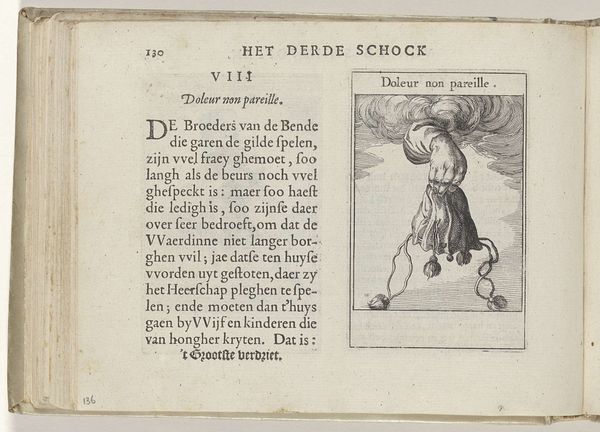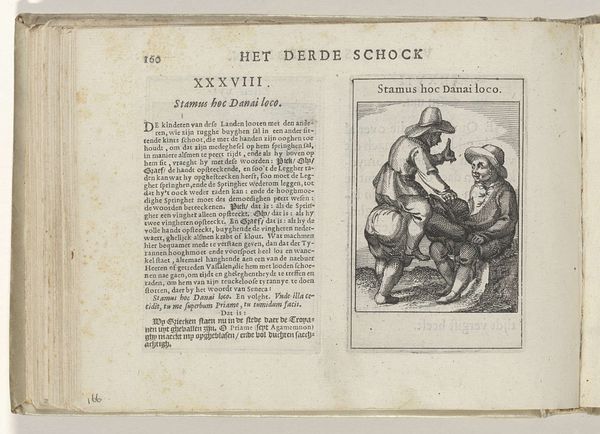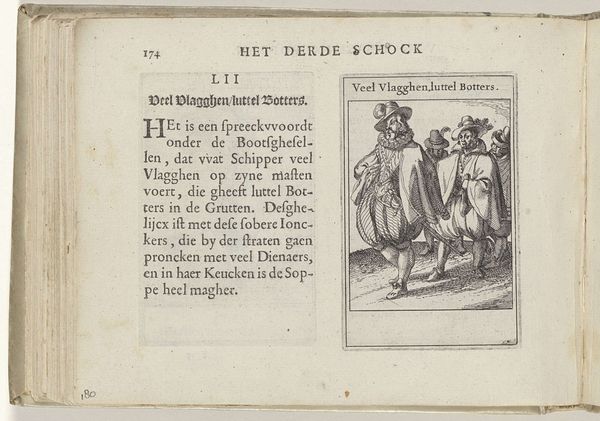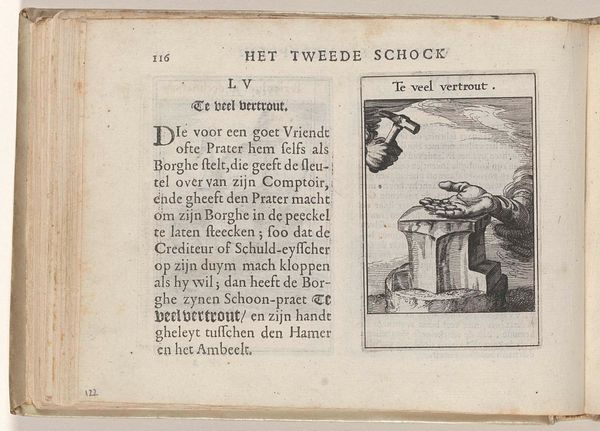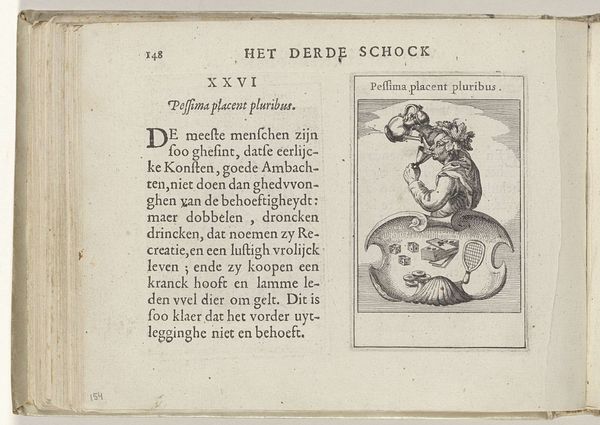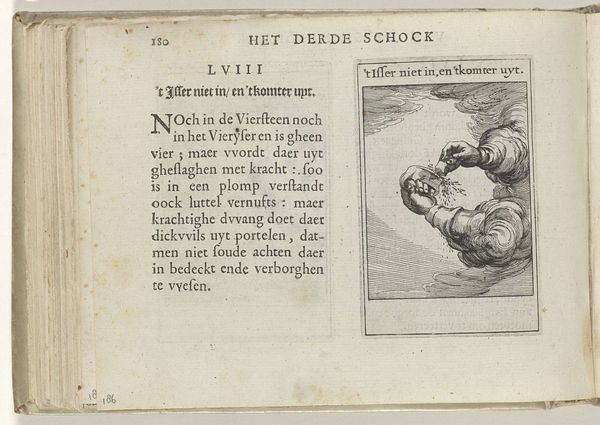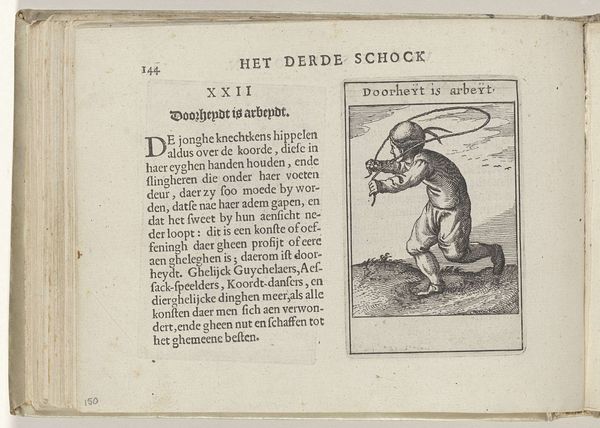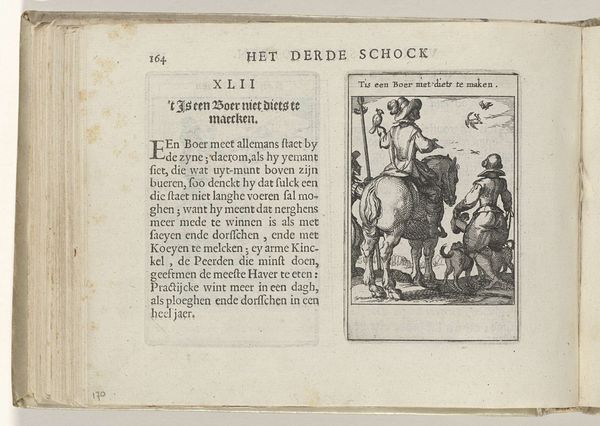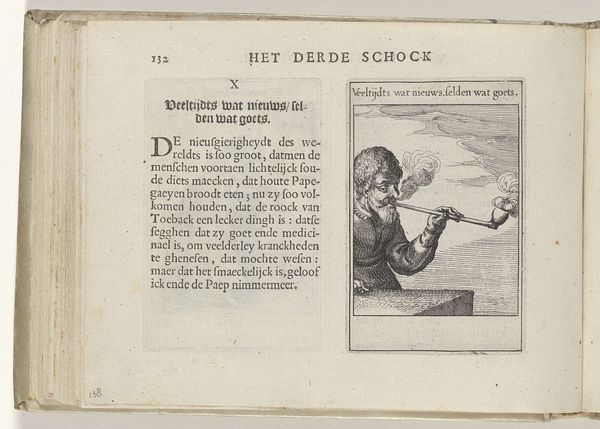
print, engraving
#
narrative-art
#
dutch-golden-age
# print
#
genre-painting
#
engraving
Dimensions: height 137 mm, width 188 mm, height 95 mm, width 60 mm
Copyright: Rijks Museum: Open Domain
Curator: This engraving, created by Roemer Visscher in 1614, is entitled "XLVIII Elck doecken nae sijn aensicht," now residing here at the Rijksmuseum. It's a Dutch Golden Age piece. Editor: My first impression is intrigue masked by subtle melancholy; the tightly crosshatched lines lend it an introspective air, a quiet snapshot of a bygone era. Curator: Precisely. The formal composition focuses on the intricate details achieved through the printmaking process. Note the way the engraver captures light and shadow through careful layering of lines to define form. The materiality itself informs our reading. Editor: Yes, I agree, I see a definite attempt at rendering each subject individually, yet, I can’t help but feel like the lines between these figures are intentionally blurred, like we are viewing archetypes, not people, echoing the genre style, while perhaps commenting on personal versus projected identities. Curator: Absolutely. And Visscher is dealing with the idea of social performance. He presents figures recognizable by their attire—a monk, a fool, a soldier. It invites the viewer to consider how appearances shape perception and judgment within a community, very interesting in this narrative context. Editor: I find it really captivating. The etching, almost dreamlike, hints at societal roles being costumes that each person dons. The question of individual personality melts away and all that is left is a silent pantomime playing out. Perhaps a darker read on our desire for acceptance and our inevitable conformity. Curator: Indeed. A potent reminder of art's capacity to dissect the human condition, particularly its relationship to visibility and truth. Editor: It has really made me think again about the roles that we all play out daily and how appearances and behaviors intertwine. The print has aged very gracefully, prompting a modern discourse, centuries after the event.
Comments
No comments
Be the first to comment and join the conversation on the ultimate creative platform.
